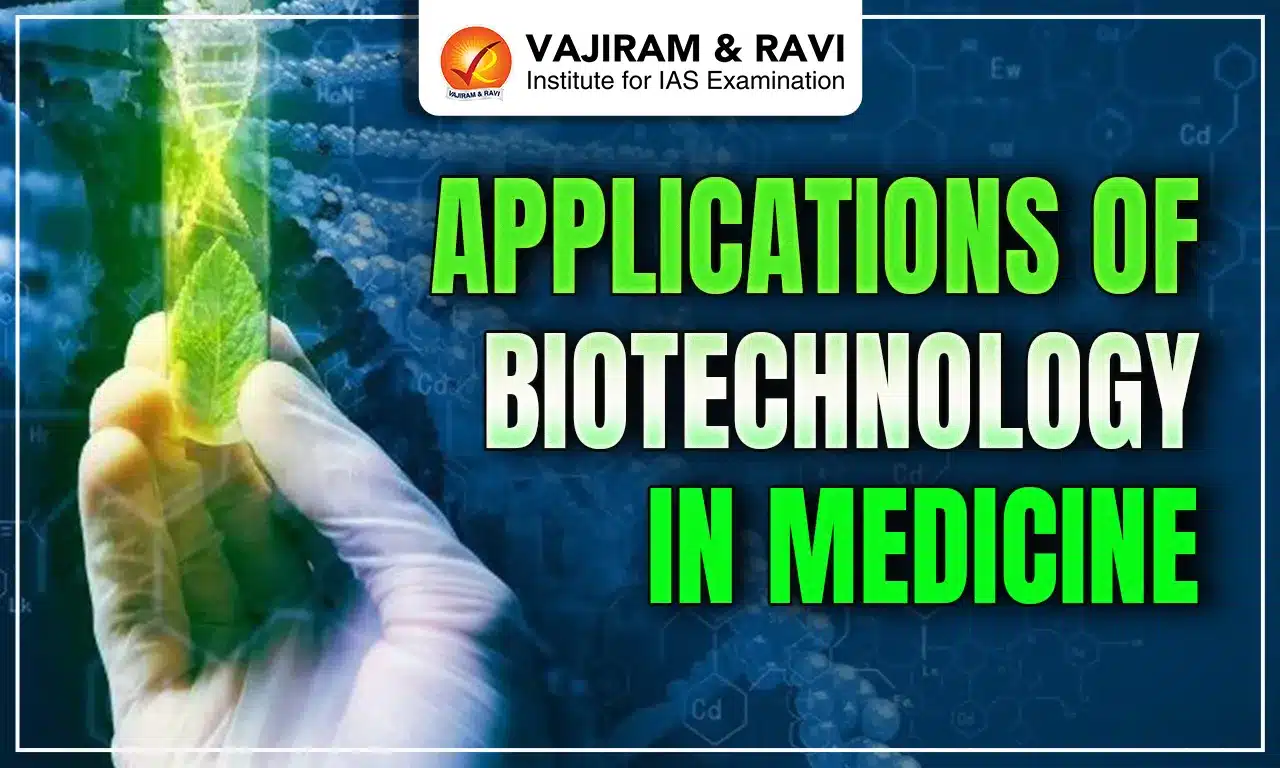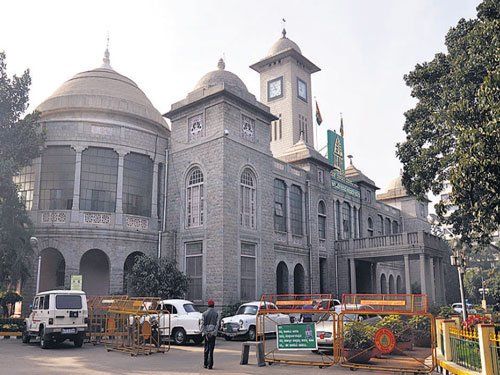Biotechnology has transformed medicine by enabling more accurate diagnostics, targeted therapeutics, personalised treatment, and preventive healthcare. Key innovations like recombinant DNA technology, genetic engineering, DNA sequencing, polymerase chain reaction, monoclonal antibodies, stem cell therapy and omics sciences have catalysed this biotechnology revolution in medicine.
The advent of recombinant DNA technology in the 1970s paved the way for a new era in medicine, enabling the production of therapeutic proteins, vaccines, and drugs in vitro. From pre-natal testing to pharmacogenomics, biopharmaceuticals to gene therapy, biotechnology has touched every field of medicine enabling better disease management, treatment outcomes, and quality of life for patients while lowering healthcare costs.
Biotechnology Applications in Medicine
Biotechnology innovations in medicine have transformed disease treatment, prevention, diagnosis, and management, enhancing both the quality and longevity of human life. These can be broadly categorised into the following aspects:
Drug Development
- Biopharmaceuticals: Biotechnology enables the production of therapeutic proteins, antibodies, enzymes, vaccines, and other drugs from biological sources like cells and microorganisms, instead of chemical synthesis.
- These biopharmaceuticals are transforming the treatment of diseases like cancer, autoimmune disorders, infections, etc.
- Pharmacogenomics: This involves studying how genetic differences affect drug responses.
- It enables the development of personalised medicines tailored to an individual’s genetic makeup.
- Pharmacogenomics promises to make therapies safer and more effective.
- High throughput screening: Biotechnology tools allow rapid screening of thousands of drug candidates against target diseases/infections to identify potential leads for further development.
- This makes the drug discovery process quicker and more efficient.
- Bioinformatics: Analysing biological data using computational tools helps identify new drug targets and disease biomarkers.
- Bioinformatics is critical for drug discovery and development in the post-genomic era.
Diagnostics
- Molecular diagnostics: Techniques like PCR, microarrays, and next-generation sequencing enable fast, sensitive, and precise diagnosis of infections, cancers, and genetic disorders by detection of biomarkers in patient samples.
- Companion diagnostics: These diagnostics identify biomarkers to determine which patients are most likely to respond to a particular therapy. They enable targeted personalised therapies.
- Biosensors: Miniaturised devices incorporating biological molecules like enzymes or antibodies can detect biomarkers rapidly and accurately. Biosensors have applications in point-of-care diagnostics.
- Lab-on-a-chip: Microfluidic devices integrate multiple lab processes from sample preparation to analysis on a single chip. They allow low-cost, automated diagnostics at the patient's bedside or in the field.
Tissue Engineering
- Stem cells: Embryonic or adult stem cells can be guided to develop into various cell types. They have applications in regenerative medicine and tissue repair.
- Biomaterials: Biocompatible synthetic polymers or biological molecules like collagen are used as scaffolds for tissue regeneration and guiding cell growth.
- 3D bioprinting: Cells and biomaterials can be precisely organised in 3D to bioprint transplantable tissues and organs. This emerging field aims to address organ shortage.

Gene and Cell Therapies
- Gene therapy: Correcting disease-causing genetic defects by inserting healthy genes using viral vectors or other delivery methods. Gene therapy products have been approved for certain cancers and genetic disorders.
- Cell therapy: Introducing healthy cells to repair or replace diseased tissues or cells. Includes transplanting stem cells, immune cells or genetically engineered cells. Used to treat cancers, autoimmune diseases, neurological disorders, etc.
- CAR T cell therapy: Patient T cells are engineered to target their cancer cells for the treatment of certain blood cancers. Other cell engineering methods are also being explored.
- CRISPR gene editing: The CRISPR-Cas9 system enables precise editing of DNA sequences. It has exciting potential applications for correcting genetic diseases.

Regenerative Medicine
- Tissue engineering: Creating scaffolds and cell cultures to regenerate damaged tissues or organs. This involves stem cells, biomaterials, bioreactors, mechanical stimulation, 3D bioprinting, etc.
- Biomaterials: Biological materials or synthetic polymers used in implants, prosthetics, scaffolds, 3D printed organs, drug delivery devices, etc. to integrate with the body and restore function.
- Wound healing: Bioengineered skin substitutes, growth factors and skin cell sprays are used to promote rapid healing of wounds with minimal scarring.
Artificial Organs
- Artificial organs: Devices that replicate the physiological function of organs. They are used to temporarily replace organ function in critical patients as a bridge to transplant.
- Bionic organs: Advanced artificial organs may incorporate tissues derived from stem cells and biological molecules to better mimic natural organs. Some also have robotic capabilities.
- Bioartificial organs: These consist of biological components like cells and tissues integrated with artificial components. They aim to provide biological functionality akin to real organs.
Medical Devices
| Biosensors |
- Devices use biological elements like enzymes, antibodies or cells to detect biomarkers. - Used for medical diagnostics, glucose monitoring, pathogen detection, drug development, etc. |
| Lab-on-a-chip |
- Microfluidic chips that integrate multiple laboratory processes. - Enable point-of-care diagnosis, drug screening, and detection of toxins or pathogens. |
| Microarrays |
- Grids with thousands of biological probes to detect multiple biomarkers simultaneously from a sample. - Used for diagnostics, personalised medicine, and disease surveillance. |
| Nanomedicine | - Using nanoparticles for targeted drug delivery, bioimaging, diagnostics, therapies, and regenerative medicine applications. |
Omics Technologies
- Genomics: Analysis of genetic sequences of organisms, patients or tumours.
- Used for drug discovery, diagnosis, personalised medicine, and understanding disease mechanisms.
- Proteomics: Large-scale study of proteins expressed in cells/tissues.
- Used for finding diagnostic or therapeutic protein markers of disease.
- Metabolomics: Analysing metabolites present in biological samples to understand cellular biology and disease mechanisms.
- Microbiome analysis: Studying microbial communities in the human body using metagenomics, metatranscriptomics and bioinformatics.
- It Provides insights into health and disease.
Bioinformatics
- Bioinformatics: Analysing and integrating large biological datasets using specialised software tools and databases.
- Used across biomedical R&D, omics technologies, clinical diagnostics, public health surveillance, etc.
- Applications: It includes gene sequencing analysis, molecular modelling, structure-based drug design, analysis of molecular interactions, disease biomarker identification, and more.
- Significance: Bioinformatics enables extracting knowledge and insights from the wealth of data generated through modern biological techniques.
| Area | Techniques/Products | Applications |
| Diagnostics | PCR, DNA microarrays, immunoassays | Molecular diagnosis of genetic and infectious diseases, prenatal diagnosis, pharmacogenetics |
| Therapeutics | Biopharmaceuticals, gene therapy, tissue culture, stem cells | Treatment of diseases like diabetes, cancer, thalassemia, spinal cord injuries etc. |
| Drug Development | Pharmacogenomics, high throughput screening, bioinformatics | Faster and more efficient drug discovery and development |
| Medical Devices | Biosensors, artificial organs, diagnostic kits, microarrays | Patient monitoring, replacement of organs, rapid disease detection |
| Vaccines | Recombinant DNA technology | Hepatitis B, HPV, and acellular pertussis vaccines |
| Xenotransplantation | Genetic engineering of donor animals | Possible alternative to overcome the shortage of human organs |
Risks and Ethical Concerns of Using Biotechnology in Medicine
While biotechnology has tremendous potential for improving health outcomes, concerns exist around risks like unintended consequences, lack of full understanding of biological systems, potential misuse, high costs limiting access, etc.
- Powerful technologies like gene editing also raise profound ethical questions that must be transparently addressed.
- There is a need for public discussion and appropriately nuanced regulations to ensure biotechnologies advance responsibly and equitably.
- Concepts like embedding ethics in design should guide technology development.
- Ultimately, the benefits must be balanced with a rigorous, evidence-based, and inclusive evaluation of attendant risks and ethical dilemmas.
Biotechnology promises more predictive, preventive, personalised, and participatory (P4) healthcare for improved clinical outcomes. However proper safety assessment and equitable access to these technologies remains vital.
Last updated on December, 2025
→ Check out the latest UPSC Syllabus 2026 here.
→ Join Vajiram & Ravi’s Interview Guidance Programme for expert help to crack your final UPSC stage.
→ UPSC Mains Result 2025 is now out.
→ UPSC Notification 2026 is scheduled to be released on January 14, 2026.
→ UPSC Calendar 2026 is released on 15th May, 2025.
→ The UPSC Vacancy 2025 were released 1129, out of which 979 were for UPSC CSE and remaining 150 are for UPSC IFoS.
→ UPSC Prelims 2026 will be conducted on 24th May, 2026 & UPSC Mains 2026 will be conducted on 21st August 2026.
→ The UPSC Selection Process is of 3 stages-Prelims, Mains and Interview.
→ UPSC Result 2024 is released with latest UPSC Marksheet 2024. Check Now!
→ UPSC Prelims Result 2025 is out now for the CSE held on 25 May 2025.
→ UPSC Toppers List 2024 is released now. Shakti Dubey is UPSC AIR 1 2024 Topper.
→ UPSC Prelims Question Paper 2025 and Unofficial Prelims Answer Key 2025 are available now.
→ UPSC Mains Question Paper 2025 is out for Essay, GS 1, 2, 3 & GS 4.
→ UPSC Mains Indian Language Question Paper 2025 is now out.
→ UPSC Mains Optional Question Paper 2025 is now out.
→ Also check Best IAS Coaching in Delhi

















